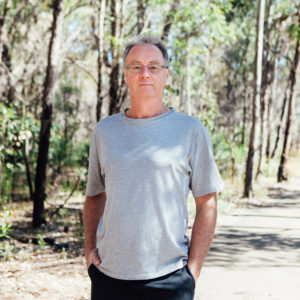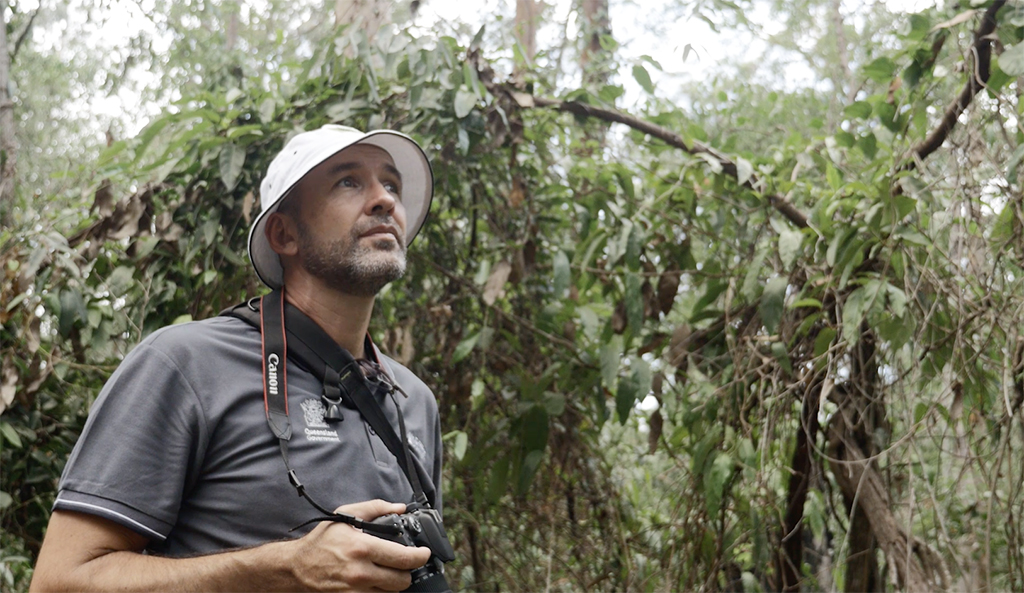Koalas sit on the A-list of world wildlife — they’re a true rock star of the animal kingdom. As such, when they’re spotted at Griffith University’s Nathan campus, they draw fawning admiration.
And like rockstars, sometimes koalas need their own security. That was the case at Nathan a few years ago, when one of the marsupials got into the habit of repeatedly crossing Ring Road.
Why did the koala cross the road? Whatever the reason, it was making a hazardous run on the bitumen at the same time and same place every afternoon.
Its behaviour drew concern from staff and students — no one wanted to see the koala get hurt. In response, campus security assigned a guard to guide it across the road each afternoon.
For several days, the guard stood next to the tree around the time the koala took its journey. When the little animal came down to ground level, the guard watched and stopped traffic so it didn’t get hurt.
When Professor Darryl Jones, one of Australia’s leading urban ecologists, heard what was happening, he went to see it for himself.
“I found the guard in the bush, standing next to the tree containing the koala. I asked him, ‘How’s it going? Are you enjoying your role? He replied, ‘It’s better than standing on the door of a nightclub, that’s for sure’.”
Toohey forest is a very different environment from Brisbane’s Fortitude Valley late at night, and one koalas and security guards, much prefer.
It’s estimated there are around 30 of them in the forest and sightings are routine in 2019. But when Professor Jones arrived at Griffith 30 years ago, there were none there.
That changed around a decade ago. The koalas began reappearing, and where they have come from is somewhat of a mystery.
Griffith researchers have tested koala faeces from the forest and found that the animals aren’t part of the same family. The best explanation is that wildlife carers have been dropping off rehabilitated animals into the forest.
They’ve chosen well; the koalas appear to be thriving. They love chewing the leaves in the tallowwood trees, and the shady cheese trees in the cool gullies are perfect for hot days.
Professor Jones says Toohey Forest is an ecological island in suburbia. It provides koalas and other wildlife food, water and habitat to eke out a living just 10 kilometres south of the Brisbane CBD.
“We’ve done a fair bit of looking at this: We know what koalas like to eat, so we have spent a lot of time making sure that there’s those sorts of trees here,” he said. “Thankfully, it’s absolutely ideal habitat for koalas.”

The number of koalas in the 260-hectare forest has become clear only recently. That is thanks to the work of Brad Lambert, a senior teacher with Toohey Forest Environment Education Centre.
It all started after Brad became aware of a koala near the motorway. It had breached the fence that separates the road reserve from the forest. Brad wondered, “How did it get here? Why is this koala able to get all the way right up to this highway?”
The koala survived — Brad named him Mo. He’s still a resident of the forest. His plight concerned Brad, though, and he made an effort in his personal time to discover how Mo breached the motorway fence.
He found some damaged areas of fence and decided to get them repaired. To do so, he needed to convince the government to invest the resources. The best way to do that was to gather data on the number of koalas within the forest to bolster his advocacy for improvements in koala conservation.
“It did concern me. Koalas, in particular, are in a massive decline. If we hope for the best and that they’re going to figure out how to live here, I don’t think it’s enough. We actually need to be doing more to protect them,” he said.
Brad recorded all the wildlife that he found on the Atlas of Living Australia website. He also started a Toohey Forest Wildlife Facebook page to engage with the community, with the vision statement: Inspiring conservation by connecting communities to nature.
“There are a lot of people who don’t think there’s much living here; they actually think it’s a dead forest. I’ve been trying to change the community awareness of what actually does live here,” he said, adding that his conservation work is done in his own time and separate to his work.
He’s been successful — there’s a growing number of naturalists who are taking an interest in the forest and its inhabitants. It’s home to lace monitors, bearded dragons, squirrel gliders, wallabies, and an array of birdlife — even a pair of powerful owls.
He has sighted 19 koalas in spatially distinct locations within a few days of each other with little chance that they were the same animal. He’s seen nine of the animals in a single day.
Brad proved that Toohey Forest is very much a living forest, and it could be a viable home for koalas and other flora and fauna for many years to come.
Professor Jones is confident it can continue being an ecological island in suburbia.
“It’s a completely suitable place for koalas to live. There’s no reason why they won’t stay here for a long time, which is really good,” he said.
If you have any concerns about the safety or wellbeing of any animal in or around any Griffith University campus, contact the relevant campus security service.

